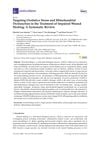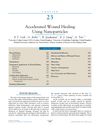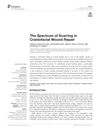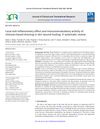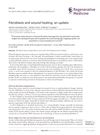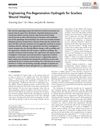Wound Healing
January 2012
wound healing hemostasis inflammation proliferation remodeling macrophages phagocytize growth factors neuropeptides cytokines granulation tissue angiogenesis hypoxia T-lymphocytes epithelialization extracellular matrix fetal wound healing scarless healing stem cells oxygen infection control nutrition
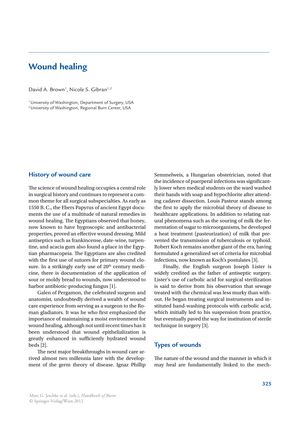
TLDR Wound healing is complex and requires more research to enhance treatment methods.
The document from 2012 provides a comprehensive overview of wound healing, tracing its history from ancient practices to modern understanding. It describes the categorization of wounds, the four phases of wound healing (hemostasis, inflammation, proliferation, and remodeling), and the cellular and molecular events that occur in each phase. Macrophages are identified as crucial in wound healing, with their ability to phagocytize debris, recruit inflammatory cells, and release growth factors. The document also discusses the role of neuropeptides, cytokines, and the formation of granulation tissue during the proliferative phase. It highlights the importance of angiogenesis, the role of hypoxia, T-lymphocytes, epithelialization, and the balance of extracellular matrix synthesis and degradation in the remodeling phase. Fetal wound healing is noted for being scarless, and the potential role of stem cells in wound repair is mentioned. Factors that can impair wound healing, such as local and systemic factors, are discussed, along with the importance of oxygen, infection control, and nutrition. The document concludes with the complexity of wound healing and the need for further research to improve treatments for both normal and pathological wound healing processes.




